5.4. General intersections. So far all the slide together structures with mortise-and-tenon joints were regular, all the pieces in the construction were equal. But the Z-cut method can be applied also in other cases. As an example a thirty piece cylindrical structure is shown in Figure 38. Five different types of pieces were used to make this object.
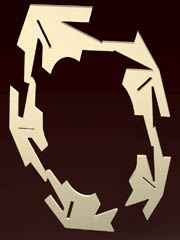
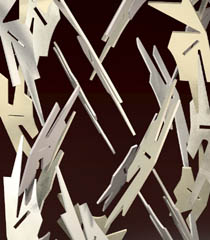
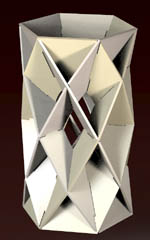

Figure 37: Pieces
Figure 38a,b: Cylinder - thirty pieces
6. Further Generalization
6.1. Parallel Faces. In section 5 in each structure any two planes had an intersection line. There were no parallel faces. The number of pieces then can be calculated by multiplying the number of faces n by (n-1). It is however no condition that each plane should intersect every other. Also in situations where we have parallel faces we can use the Z-cut method to construct a set of pieces for a slide-together structure. The cubical construction in Figure 39 is made of twenty four equal pieces. Each of the six faces is divided into four parts using the Z-cut, now leaving a square hole in the middle.
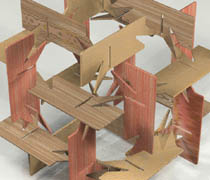
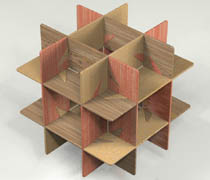

Figure 39a,b: Cube - twenty four pieces
6.2. Outside the center. Looking at the construction of Figure 39 we can say that the connection between the pieces takes place at the vertices of a cube and that pairs of pieces follow the edges of the cube. Describing the structure in this way gives us a method of using the same steps starting with other polyhedra, for instance the tetrahedron or the dodecahedron. Also in these polyhedra three faces meet at every vertex, so the same translation can be used. In case of the dodecahedron (Figure 41) we end up with a 60-piece slide-together structure.
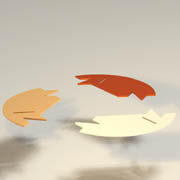
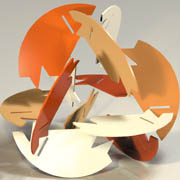
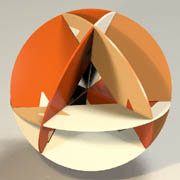

Figure 40a,b,c: Tetrahedron - twelve pieces

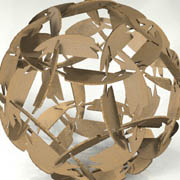
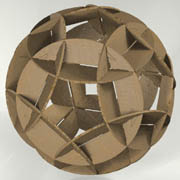

Figure 41a,b,c: Dodecahedron - sixty pieces